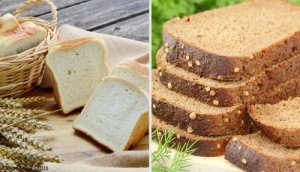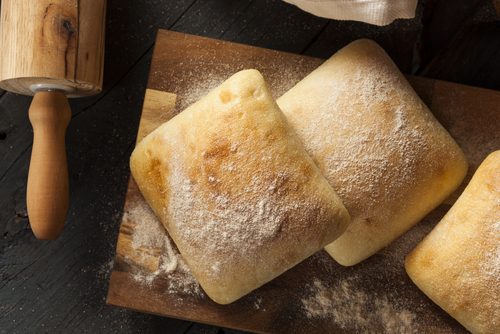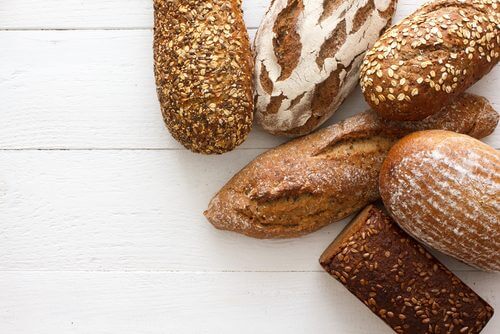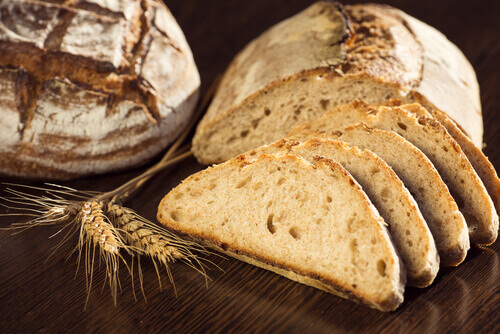White Bread or Whole Grain Bread: Which is Better?

One of the biggest debates around nutrition in today’s world is what kind of bread we should be eating. The strange thing is that many people make their choice without really understanding the difference between the options.
Is white bread or whole grain bread better?
Bread is much healthier in its different whole grain varieties, that we know is true, but most people don’t understand why. It’s surprising how many questions and myths remain around one of the most widely eaten foods in the entire world.
Is bread really fattening and bad for me? Is it better if it’s brown? Let’s take a look at a few things and clear up some of the confusion.
Whole grain bread is more… nutritious?
Traditionally, bread is made up of three parts after being baked: the bran, the germ, and the starch. We need to know this in order to understand the difference between white and “brown” bread.
While the flour that white bread is made of is only the starch, whole grain bread contains the germ and bran as well.
That means it contains more of the nutrients from the grain.
- As a result, it’s a mistake to believe that whole grain bread is like a diet food.
- It’s simply able to provide the greatest nutrition for the fewest calories.
Are all brown breads whole grain?

They also sometimes are enriched with vitamins like vitamin B, but while it fools some people, they’re still white bread.
The worst thing is that stores market them as if they were natural products.
So why is white bread less healthy?
Basically, the problem is in how it is processed to give it a color, appearance, and texture that the market wants.
Unfortunately, each step in process takes more fiber, minerals, and natural fats out.
Since there is less fiber, it doesn’t do anything good for your digestion. On the other hand, whole grain bread helps your intestines process food more quickly.
You’ll feel the need to eat more white bread to get full, too.
The search for the perfect loaf

Everything we talked about above shows how calories aren’t the main difference between the two kinds of bread. The best thing to do is to eat a variety of healthy, natural, fiber-rich bread.
Which is better?
We advise eating whole grain bread. This way you get the fiber, vitamins, and nutrients your body needs.
Stay away from varieties with too much gluten or added sugars. Overall, the healthiness of bread depends on what the flour it’s made from contains.
The benefits of bread
Believe it or not, eating bread in moderation is good for you.
- The fiber helps your intestines get moving and expel waste.
- Eating bread could also support good heart health. Eat at least 2 or 3 small servings (70 g) a day.
- For people with diabetes, moderate consumption of whole grain bread is recommended. That’s because it keeps your blood sugar more stable than refined versions.
Moderate consumption of bread

Actually, how healthy your bread is depends more on what you eat it with.
- The problem often lies in what you put on or in the bread.
- Eating it with butter, deli meat, and other unhealthy foods is very bad for your long-term health.
We advise alternating bread with other good sources of carbohydrates such as pasta, rice, oats, and quinoa.
If you get high-quality bread and eat it in moderation, you’ll be doing a good thing for your body.
All cited sources were thoroughly reviewed by our team to ensure their quality, reliability, currency, and validity. The bibliography of this article was considered reliable and of academic or scientific accuracy.
- Grosch, W., & Schieberle, P. (2017). Bread. In Volatile Compounds in Foods and Beverages. https://doi.org/10.1201/9780203734285
- Ćurić, D., Novotni, D., & Smerdel, B. (2014). Bread Making. Engineering As of Cereal and Cereal-Based Products. https://doi.org/10.1201/b15246
- Scanlon, M. G., & Zghal, M. C. (2001). Bread properties and crumb structure. Food Research International. https://doi.org/10.1016/S0963-9969(01)00109-0
This text is provided for informational purposes only and does not replace consultation with a professional. If in doubt, consult your specialist.








